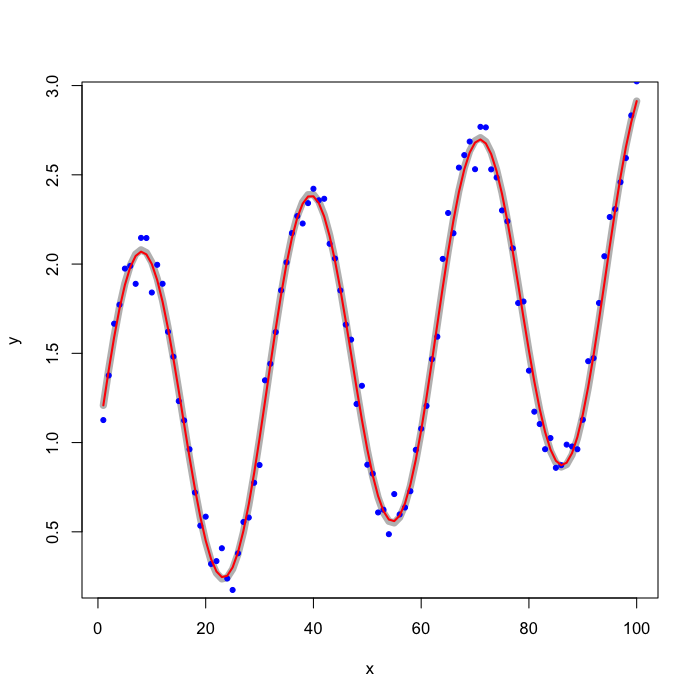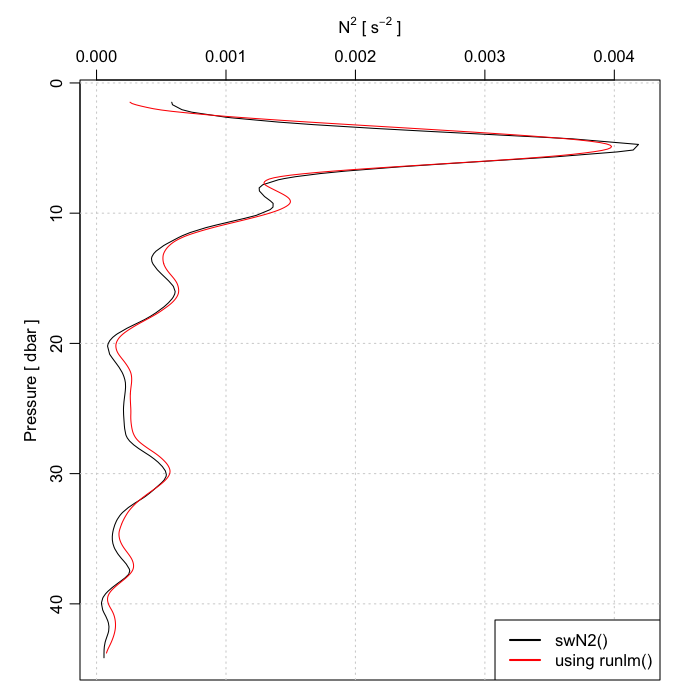oce runlm function
Feb 11, 2014
The week-old ``runderiv()`` function has been replaced with a more useful ``runlm()`` function. This post shows how to use it.
Introduction
As was expected, the runderiv() function has been both useful and deficient. Useful because it offers a good replacement for smooth.spline() calculations of derivatives for things like N^2. And deficient because it only calculated derivatives, not values!
Both an extension and a renaming were called for. The result is runlm().
Tests
Below are the examples from its manpage, with the results.
Case 1
1
library(oce)
## Loading required package: methods
## Loading required package: mapproj
## Loading required package: maps1
2
3
4
5
6
7
8
x <- 1:100
y <- 1 + x/100 + sin(x/5)
yn <- y + rnorm(100, sd=0.1)
L <- 4
calc <- runlm(x, y, L=L, deriv=0)
plot(x, y, type='l', lwd=7, col='gray')
points(x, yn, pch=20, col='blue')
lines(x, calc, lwd=2, col='red')
 Case 2
Case 2
1
2
3
4
5
6
7
8
9
10
data(ctd)
plot(ctd, which="N2")
rho <- swRho(ctd)
z <- swZ(ctd)
zz <- seq(min(z), max(z), 0.1)
N2 <- -9.8 / mean(rho) * runlm(z, rho, zz, deriv=1)
lines(N2, -zz, col='red')
legend("bottomright", lwd=2, bg="white",
col=c("black", "red"),
legend=c("swN2()", "using runlm()"))

Comments
-
The fit in Case 1 is almost spookily good.
-
The N^2 results suggest including this as a method for
swN2(), perhaps the default method, but that’s for another day.
Resources
- Source code: 2014-04-11-runlm.R